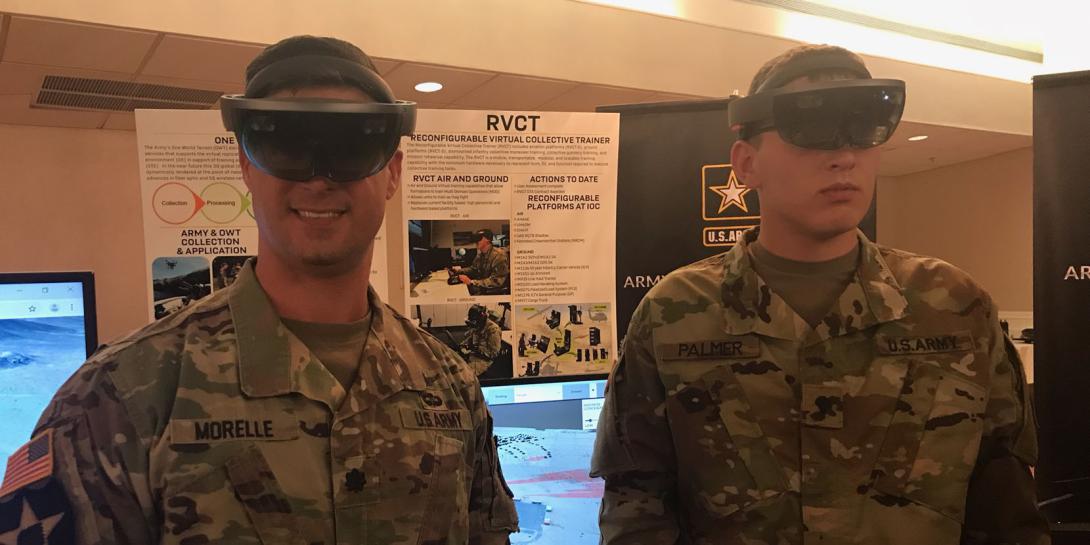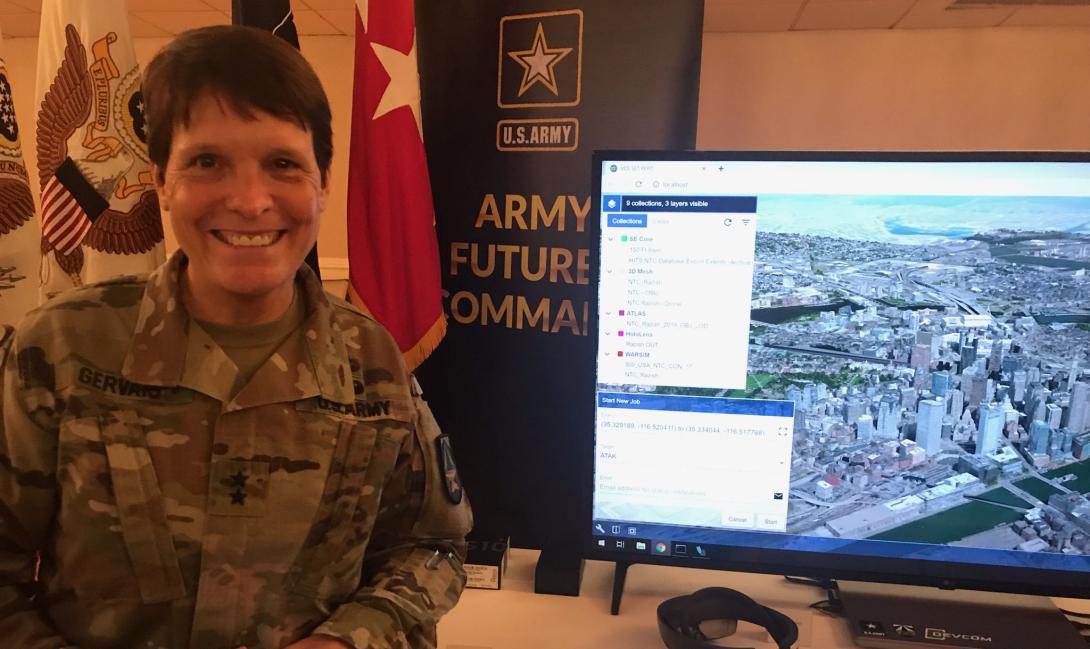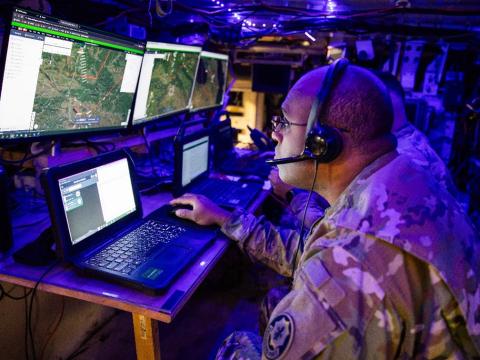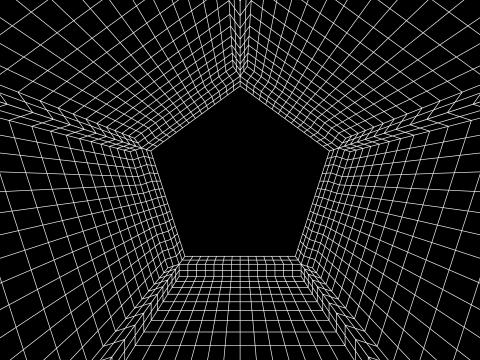Digital Tools Will Bring the World to Army Soldiers
The U.S. Army is adding powerful digital tools to its training and readiness processes that will allow soldiers to fight in dense urban environments, megacities and subterranean areas.
Led by its one-year-old Army Futures Command (AFC)—which will be fully operational next month— the service is tackling modernization head-on. Through the AFC’s eight cross-functional teams (CFTs), the service is developing key tools to equip warfighters over the next decade and beyond. The CFTs, such as the Synthetic Training Environment Cross-Functional Team (STE CFT), are implementing the Army’s modernization priorities outlined two years ago.
The CFTs presented their most recent accomplishments at the AFC’s CFT Media Day at Joint Base Myer-Henderson Hall, Virginia, on July 16.
The STE CFT has developed two important digital tools for soldiers, One World Terrain (OWT) and the Reconfigurable Virtual Collective Trainer (RVCT), explained the STE CFT director, Maj. Gen. Maria Gervais, USA. The general, along with Lt. Col. Dylan Morelle, USA, demonstration officer, STE CFT; and Spc. Cody Palmer, USA, a Bradley driver with B Co., 1st Bn., 18th Infantry Regt., 2nd Armored Brigade Combat Team, 1st Infantry Division, Fort Riley, Kansas; spoke with SIGNAL Magazine at the AFC event.
Squarely aimed at improving soldier readiness, the OWT platform provides an advanced mapping capability and related information services, which “support the virtual replication of the physical Earth and complexities of the operational environment (OE) in support of training as provisioned through the Army’s Synthetic Training Environment,” according to the Army.
“The synthetic training environment that we are working to create is what we call One World Terrain, which is a common 3D digital terrain that is globally accessible anywhere in the world,” Gen. Gervais said. “And we want that to work in all of our simulators and simulations, so that it's all the same, at the right level of fidelity for how we need to train.”
The system stores global locations that soldiers can use to visualize and examine in training and planning missions. The soldiers will be able to export the data out to different applications, Lt. Col. Morelle said. It provides flexibility of use across Internet of Things devices, including cellphones, tablets, smart TVs—and in the future, 5G devices—to display the digital 3D interactive maps. And when paired with other tools, such as unmanned aerial systems, OWT can capture data to display, Lt. Morelle explained. “We can take really any kind of terrain available from lidar, or satellite footage or from drone capture, things like that.”
For the CFT, the development of the RVCT provides a modern, nimble alternative to older, cumbersome systems used to train soldiers to operate air vehicles such as the Apache or Blackhawk Chinook helicopters or ground vehicles such as the Abrams Tank, Stryker, Joint Light Tactical Vehicle or cargo trucks. “The old system had these massive minivan-size containers,” Spc. Palmer said. “And they're all stored in these massive warehouses. And if there was a problem and they broke down, we couldn’t do anything because they were civilian-run. We're stuck just sitting there wasting training time, which is very precious.”
In comparison, the RVCT is a smaller, mobile, modular and scalable trainer that is easy to use, the specialist said. “We are able to pick the RVCT out of a box, put everything together, and are running training sessions in 20 minutes.”
In addition to the air and ground vehicle training, the RVCT can be used for dismounted infantry collective maneuver preparation, collective gunnery training and mission rehearsal capability, the Army said.
“It improves the amount of time we get to train, and the quality of the training,” Spc. Palmer said. “It gives us better representation of a simulated environment that we will be going into.”
In addition to leveraging advances from the virtual gaming industry, the CFT relied on other transactional authority (OTA) contract vehicles, which have helped with the speed of implementation of both of the tools, the general noted.
“We became a CFT in November 2017,” Gen. Gervais said. “In one and a half years, we've already had our very first user assessment. We've already had prototypes for our training simulation software, our training management tools and One World Terrain. We just concluded that in May.”
From that user assessment, the CFT learned that their involved technology was much more mature than previously thought, allowing the CFT to accelerate the capabilities. “It also gave us a better costing estimate, and it helped us refine our requirements,” Gen. Gervais stated.
Last month, the Army put in place follow-on contracts with four vendors, which will enable the CFT to deliver an initial OWT capability by 2021, following a pilot program this fall, the general said. The Army aims to have OWT fully operational by FY 2023. So far, soldiers from the Army’s 10th Mountain Division, the 25th Infantry Division, the National Training Center, the Joint Readiness Training Center and several U.S. Marine Corps Marine Expeditionary Forces are using OWT, she noted.






Comments